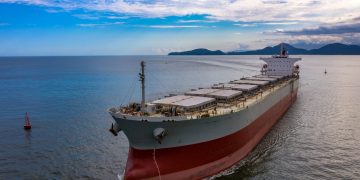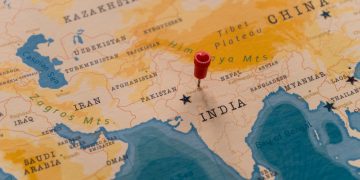MARPOL Annex VI requirements coming into force on 1 January 2013
 With the new MARPOL Annex VI requirements coming into force on 1 January 2013, it is imperative that shipowners and operators are up to date on the consequences for their fleet.
With the new MARPOL Annex VI requirements coming into force on 1 January 2013, it is imperative that shipowners and operators are up to date on the consequences for their fleet.
What is the EEDI?
EEDI stands for Energy Efficiency Design Index. It is an index quantifying the amount of carbon dioxide that a ship emits in relation to the goods transported. The actual EEDI of a vessel is called the “attained EEDI” and is calculated based on guidelines published by IMO. The result must be below the limit (“required EEDI”) prescribed in MARPOL.
For existing vessels, the EEDI is in most cases irrelevantA. For new shipsB, a technical file must be created showing the attained EEDI and its calculation process. The EEDI and the technical file will be subject to verification by the flag administration. Note that the EEDI and technical file are not required for all ship typesC.
What is an IEEC?
IEEC stands for International Energy Efficiency Certificate. It is a newly introduced certificate that is mandatory for all vessels of 400 gross tonnage and above. Contrary to most statutory certificates, the IEEC is not connected to a survey scheme and does not have an expiry date. For new ships, the certificate will state both the attained and required EEDI of the vessel.
For new ships, an IEEC is to be issued at the vessel’s initial survey provided the EEDI has been verified (for applicable vessels) and the SEEMP is on board. For existing shipsD, the IEEC is to be issued on the first intermediate or renewal survey for the IAPP certificate (whichever comes first) on or after 1 January 2013 provided the SEEMP is on board.
Additionally, the IEEC must be re-issued in the case of a major conversionE. The latter applies definitely to new shipsB. IMO is expected to clarify (at MEPC 64 in October) whether existing ships need an IEEC after any type of major conversion.
What is the SEEMP?
SEEMP stands for Ship Energy Efficiency Management Plan. The main purpose of the SEEMP is to lay down a mechanism for a company and/or a ship to improve the energy efficiency of a ship’s operation and preferably link it to a broader corporate energy management policy. All ships must have a SEEMP on board before the issuance of the first IEEC. The SEEMP is not subject to approval or verification by the Administration.
With the new MARPOL Annex VI requirements coming into force on 1 January 2013, it is imperative that shipowners and operators are up to date on the consequences for their fleet.
How can DNV assist?
EEDI
DNV Classification services verifies EEDI Technical Files as authorised by flag administrations, as part of standard newbuilding scope.
Additionally, DNV Advisory can help owners to develop EEDI Technical File packages for their fleet. The entire EEDI calculation process is covered, including a review of the design documents required to calculate the EEDI and a review of the sea trial procedures, assessment of the speed and power reached during model tests and sea trials, calculation of the attained EEDI and identification of improvement areas. DNV Advisory delivers a complete EEDI Technical File to support the EEDI verification.
SEEMP
DNV Advisory has created a free guideline on how a company can develop SEEMPs itself (www.dnv.com/SEEMP). DNV also help owners to develop fuel saving SEEMPs, working together with the owner to identify and prioritise measures that will improve energy efficiency. DNV Advisory can deliver master SEEMPs for a fleet and individual SEEMPs for all vessels.
As an additional service if requested by the owner, DNV can examine a SEEMP and verify compliance with the IMO instructions.
Seamless Service involving ISO 50001
ISO 50001: 2011 Energy Management Systems is an ISO standard that establishes a framework for a company’s energy management system. It follows along similar lines to ISO 14001 Environmental Management Systems. Due to the interest shown by several shipping companies, DNV Business Assurance and DNV Maritime will offer ISO 50001 certification (through a Statement of Compliance) as part of the Seamless Service.
Source: DNV






























































